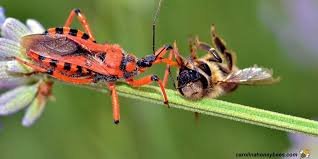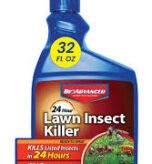
Introduction: Honey Bee Predators and Defense Strategies
Honey bees are among the most vital pollinators on Earth, ensuring food security and biodiversity. But their survival is constantly challenged by numerous threats. From wasps and hornets to birds, mammals, and even microscopic invaders, honey bee predators are diverse and deadly. To survive, bees have evolved extraordinary defense strategies. Understanding these predator-prey dynamics not only helps beekeepers safeguard their hives but also highlights the incredible resilience of bees in maintaining ecological balance.
The Many Predators of Honey Bees
Honey bees are nutrient-rich and easily accessible, making them a target for a wide range of predators. These attackers come from multiple classes of animals, each with unique hunting tactics.
Insect Predators
- Wasps and Hornets: Species such as the Asian giant hornet (Vespa mandarinia) and European wasp (Vespula germanica) are notorious for raiding hives, killing thousands of bees in hours.
- Praying Mantises: Ambush predators that wait on flowers, striking bees mid-pollination.
- Spiders: Crab spiders and jumping spiders target bees visiting flowers, injecting venom to paralyze them.
- Ants: Especially in tropical regions, ants raid hives, eating brood and forcing bees to abandon colonies.
- Other Insects: Robber flies, dragonflies, small hive beetles, and wax moths also prey on bees or their resources.
📷 Suggested image: A hornet attacking a honey bee at the hive entrance
Alt text: Asian hornet attacking honey bee colony
Avian Predators
- Bee-eaters: Colorful birds that specialize in bees and wasps, catching them mid-air.
- Honey Buzzards: Tear open hives with strong talons to feast on larvae.
- Swallows & Tanagers: Agile fliers that capture bees in flight.
📷 Suggested image: A European bee-eater with a honey bee in its beak
Alt text: European bee-eater bird catching honey bee
Mammalian Predators
- Bears: Destroy hives for honey, larvae, and adult bees.
- Skunks and Raccoons: Raid hives at night, consuming bees and brood.
- Rodents and Shrews: Chew through hive materials to eat larvae.
- Honey Badgers: Infamous hive raiders, strong enough to tear apart beekeeping equipment.
📷 Suggested image: A bear raiding a beehive
Alt text: Bear attacking honey bee hive for honey and larvae
Amphibians and Reptiles
- Frogs and Toads: Opportunistically eat bees that come within range.
- Snakes and Lizards: Occasionally raid nests for larvae or catch adult bees.
📷 Suggested image: Frog attempting to eat a honey bee
Alt text: Frog preying on honey bee near hive
Honey Bee Defense Strategies
Honey bees have developed remarkable survival tactics against predators.
Individual Defenses
- Stinging: Worker bees sacrifice themselves to protect the colony.
- Avoidance: Bees use visual and chemical cues to evade predators.
Collective Defenses
- Alarm Pheromones: Guard bees release chemicals that mobilize hive defense.
- Balling: Bees surround predators like hornets, generating heat and CO₂ until the intruder dies.
- Shimmering & Shaking: Bees vibrate their abdomens to warn and confuse predators.
- Nest Design: Bees reinforce hives with propolis and fecal spotting to deter invaders.
📷 Suggested image: Honey bees balling a hornet
Alt text: Honey bees forming a heat ball around hornet predator
How Beekeepers Can Help
Beekeepers can strengthen hive defenses through smart management:
- Hive Placement: Elevate hives on stands to deter skunks and ants.
- Physical Barriers: Use entrance reducers, bird guards, and electric fencing for larger predators.
- Wasp & Hornet Traps: Place bait traps away from hives.
- Regular Inspections: Ensure colonies remain strong and healthy.
📷 Suggested image: Beekeeper installing protective mesh around hive
Alt text: Beekeeper protecting honey bee hive from predators with mesh
Conclusion: A Delicate Balance
The relationship between honey bees and their predators is a natural arms race. While predators play an important role in ecosystems, bees demonstrate extraordinary resilience through both individual courage and collective intelligence. By understanding honey bee predators and defense strategies, we can better protect these pollinators—ensuring healthy hives, robust ecosystems, and sustainable food production for the future.
Internal Links (for your site)
- Beekeeping Basics: How to Start Your First Hive
- The Role of Honey Bees in Pollination and Food Security
- How to Identify and Prevent Common Honey Bee Diseases
https://pesteraser.in/


